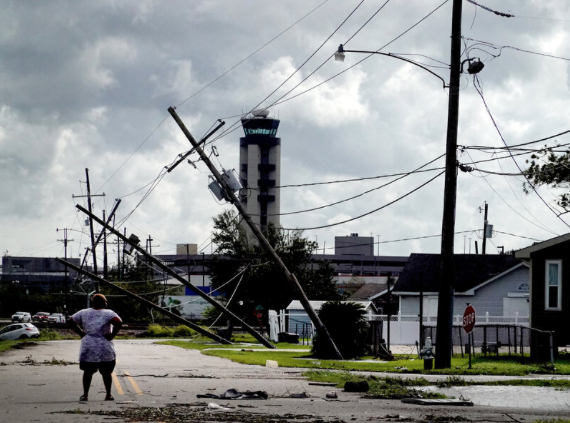CommentsCLIMATE CHANGE - Ida was a fierce Category 4 hurricane when it came ashore Sunday in Louisiana. With sustained winds of about 150 mph, the storm ripped roofs off buildings and snapped power poles.
It pushed a wall of water powerful enough to sweep homes off foundations and tear boats and barges from their moorings.
Climate change helped Ida rapidly gain strength right before it made landfall. In about 24 hours, it jumped from a Category 1 to a Category 4 storm as it moved over abnormally hot water in the Gulf of Mexico.
The ocean was the temperature of bathwater — about 85 degrees Fahrenheit. That's a few degrees hotter than average, according to measurements by the National Oceanic and Atmospheric Administration.
The extra heat acted as fuel for the storm. Heat is energy, and hurricanes with more energy have faster wind speeds and larger storm surges. As the Earth heats up, rapidly intensifying major hurricanes such as Ida are more likely to occur, scientists say.
The trend is particularly apparent in the Atlantic Ocean, which includes storms such as Ida that travel over the warm, shallow water of the Caribbean Sea. A 2019 study found that hurricanes that form in the Atlantic are more likely to get powerful very quickly.
Residents along the U.S. Gulf Coast have been living with that climate reality for years. Hurricane Harvey in 2017, Hurricane Michael in 2018 and Hurricane Laura in 2020 all intensified rapidly before they made landfall. Now Ida joins that list.
Hurricanes such as Ida are extra dangerous because there's less time for people to prepare. By the time the storm's power is apparent, it can be too late to evacuate.
Abnormally hot water also increases flood risk from hurricanes. Hurricanes suck up moisture as they form over the water and then dump that moisture as rain. The hotter the water — and the hotter the air — the more water vapor gets sucked up.
Even areas far from the coast are at risk from flooding. Forecasters are warning residents in Ida's northeastward path to the Mid-Atlantic that they should prepare for dangerous amounts of rain. Parts of central Mississippi could receive up to a foot of rain on Monday.
Rebecca Hersher (she/her) is a reporter on NPR's Science Desk, where she reports on outbreaks, natural disasters, and environmental and health research. Since coming to NPR in 2011, she has covered the Ebola outbreak in West Africa, embedded with the Afghan army after the American combat mission ended, and reported on floods and hurricanes in the U.S.






